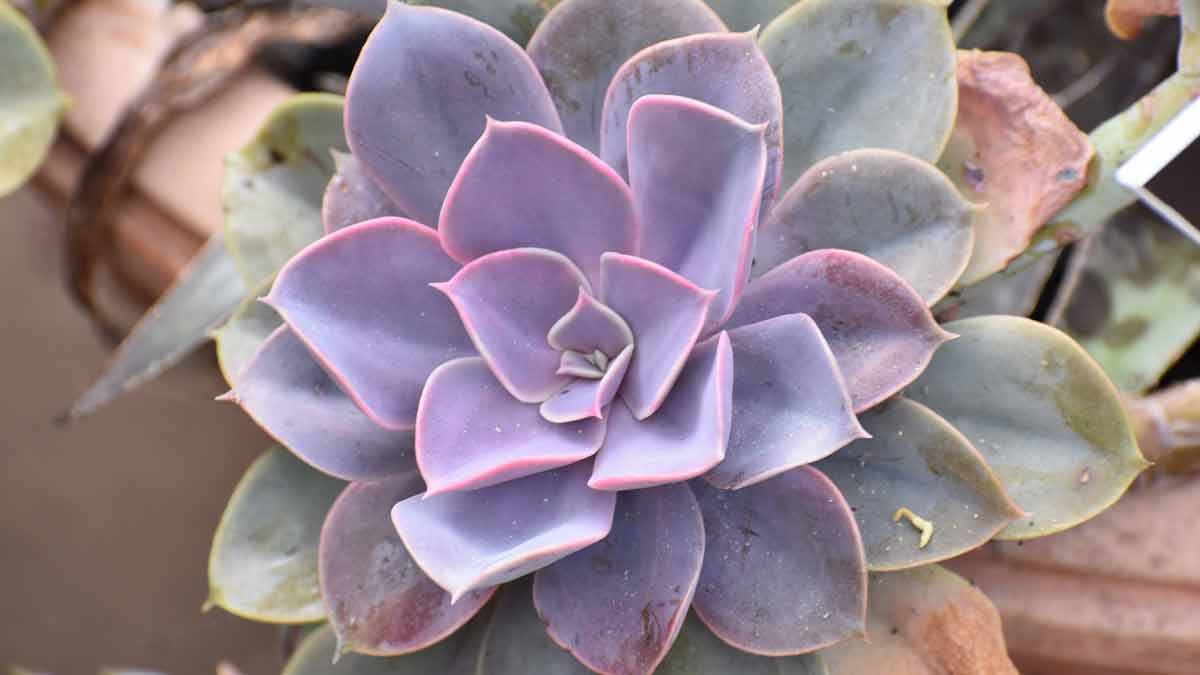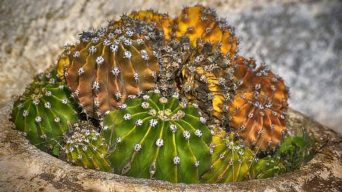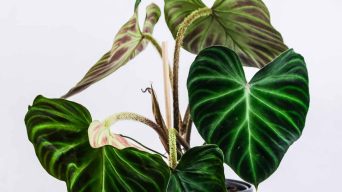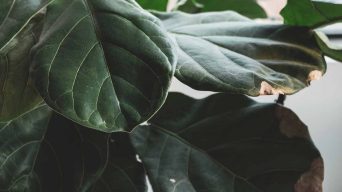Key Takeaways
- Sunburned Echeveria can be caused by overexposure to direct sunlight, insufficient water, temperature extremes, lack of humidity, and poor soil quality.
- Symptoms of sunburned Echeveria include discolored leaves, shriveled or wilted appearance, and dry or crispy texture.
- To treat sunburned Echeveria plants, it’s important to relocate them to a shadier area, increase the watering frequency and humidity levels, use shading devices or covers appropriately, avoid over-fertilization through proper nutrition care, and prune damaged leaves or stems.
- Preventing sunburn on Echeveria requires gradually exposing the plant to sunlight while maintaining its appropriate shade requirements and soil quality.
Sunburned Echeveria is a common issue plant enthusiasts face, causing unsightly damage to these beautiful and beloved succulents.
In this blog post, we will delve into the leading causes behind sunburn on Echeveria plants, how to accurately identify the signs of damage, and explore straightforward solutions for treating and preventing this problem.
Equipped with our expert tips, you’ll be able to help your precious indoor plants survive and thrive under your care.
Causes Of Sunburn On Echeveria Plants
Echeveria plants may experience sunburn due to various factors, such as exposure to direct sunlight for too long, insufficient water, extreme temperatures, low humidity, and poor soil quality.
Overexposure To Direct Sunlight
Like many succulents, Echeveria plants thrive in bright light but can become vulnerable to overexposure to the sun’s intense rays.
Too much direct sunlight can lead to scorched leaves and a decline in your plant’s health.
Plant owners must be mindful of Echeveria’s location and gradually acclimate them to their preferred lighting conditions.
For instance, if you recently brought home a new plant or moved it outdoors for the summer season, try positioning it in a spot with dappled shade before slowly transitioning into more sun exposure.
Insufficient Water
Insufficient water can be a significant factor contributing to sunburned Echeveria plants.
The Echeveria is a drought-tolerant plant that can withstand periods of less frequent watering, but they still require adequate hydration to help maintain its overall health and appearance.
When these succulents do not receive enough water, their leaves become more susceptible to the damaging effects of direct sunlight.
For example, imagine a thriving greenhouse filled with beautiful terrariums housing an assortment of indoor plants such as cacti, echeveria rainbow species, or succulents indoors.
Suppose one of those potted Echeverias receives insufficient water consistently while also being positioned in an area that gets intense sunlight daily.
The stress from inadequate hydration combined with excessive sun exposure makes this succulent far more vulnerable to developing signs of sunburn compared to another well-hydrated plant placed in partial shade or receiving indirect sunlight.
Temperature Extremes
Temperature extremes can play a significant role in causing sunburn on Echeveria plants.
These hardy succulents generally prefer consistent temperatures between 50-80°F, but fluctuations outside this range may leave your beloved plant vulnerable to sun damage.
In contrast, cold weather might weaken the natural defense mechanisms found in these drought-tolerant plants, making them more susceptible to harmful UV rays during sunny days.
To help protect your Echeveria from temperature extremes, ensure it is placed in a location where it receives four hours of soft morning sunlight before getting diffused shade for the rest of the day.
Watch for sudden seasonal changes and adjust using a shade cloth or relocating your cactus to prevent potential sunburn-related problems.
Poor Soil Quality
The soil quality that your echeveria plant is grown in can significantly impact the plant’s overall health and susceptibility to sunburn.
Echeverias require well-draining soil allowing water to flow through while retaining moisture.
If the soil is too compact or lacks drainage, it can lead to root rot and other issues that weaken the plant’s ability to withstand high heat and sunlight.
Adding sand or perlite to heavy soils can improve their drainage capacity, while using a specialized potting mix designed for succulents and cacti will ensure the right balance of nutrients for your Echeveria.
Identifying Sunburned Echeveria Plants
You can easily spot sunburned Echeveria plants by looking for signs such as discolored leaves, shriveled or wilted appearance, and dry or crispy texture.
Discoloration
The discoloration is the most obvious symptom of a sunburned echeveria plant.
Leaves overexposed to direct sunlight may become white, yellow, or brown and appear papery or crispy.
The discolored patches on the leaves can be quite striking and are often accompanied by wilting or shriveling of the plant.
Addressing sunburn immediately is essential to prevent long-term damage and scarring.
If caught during the whitish stage of sunburn, a sunburnt succulent can still be saved by placing it in a shady spot for 3-7 days while minimizing watering until it recovers fully.
Shriveled Or Wilted Leaves
One of the most common symptoms of sunburn on Echeveria plants is shriveled or wilted leaves.
When exposed to intense sunlight, these drought-tolerant plants can lose moisture quickly and become dehydrated.
This can cause their leaves to appear limp, weak, or skinny. In severe cases, the affected leaves may dry up and fall off.
Underwatering can also lead to similar symptoms in succulents like Echeveria, so it’s important to check the soil moisture level and water accordingly regularly.
On the other hand, overwatering can result in soggy roots prone to rotting – another potential cause of wilting leaves.
Dry Or Crispy Texture
When Echeveria plants are sunburned, they may develop a dry or crispy texture that can be unsightly and harmful to the plant’s overall health.
The succulent leaves can turn white, yellow, or brown due to dehydration caused by excessive heat exposure.
When this happens, it is important to take action quickly to save your plant from further damage or even death.
You may notice that the affected parts of your Echeveria appear brittle and can easily break off with minimal pressure.
To prevent the further spread of damage, it is recommended that you cut off these damaged parts at their base with sterile cutting tools and allow new growth to emerge.
Treating Sunburned Echeveria Plants
If your Echeveria plants are sunburned, you can help them by moving them to a shadier spot and increasing their water and humidity levels.
It’s important to avoid over-fertilizing them.
Additionally, you can use shading devices, covers, sun protection spray, or shade cloth to assist in their recovery.
Relocating To A Shadier Area
If you notice that your Echeveria plant has been sunburned, one of the first steps is to relocate it to a shadier area.
This can help prevent further damage and allow the plant to recover.
Look for a spot with partial shade or indirect sunlight, such as under a tree or on a covered porch.
It’s also important to ensure the new location provides enough light for the Echeveria plant’s needs.
Remember that once the sun has burned parts of the plant, they will not regenerate into healthy tissue.
However, by providing proper care in its new home, your Echeveria should begin producing new growth without sun damage.
Keep an eye on the watering schedule and ensure that soil moisture levels are consistent without becoming soggy or completely dry out between waterings.
Increasing Watering Frequency And Humidity
To help your sunburned Echeveria plants recover, increasing the watering frequency and maintaining the proper humidity level is important.
This will provide them with sufficient moisture to heal from damage.
However, be careful not to overwater, as this can cause root rot.
In addition, keeping the proper humidity level is crucial for the healthy growth and vitality of succulent plants like Echeveria.
You can achieve this by regularly misting or using a humidifier, grouping plants, or placing a tray filled with water under their pots.
Using Shading Devices Or Covers
If you’ve identified sunburn on your Echeveria plant, shading devices or covers can help treat the issue.
Options for shading include everything from an old sheet to a specially designed shade cloth.
The goal is to protect the plant from direct sunlight during peak hours of the day and provide partial shade as needed.
Remember that not all Echeverias will require shading, so monitoring your plants closely and adjusting accordingly is important.
If you notice wilting or discoloration even with shading devices, consider relocating the plants entirely or introducing additional measures such as misting or increasing watering frequency.
Avoiding Over-fertilization And Providing Proper Nutrition
Over-fertilization can be detrimental to the health of Echeveria plants, causing stress and damage that can lead to sunburn.
Instead, it’s important to provide your plants with proper nutrition in a controlled manner.
A thin, diluted high-phosphorus formula fertilizer is best for promoting flowering in Echeveria plants.
In addition, providing suitable soil conditions can help promote healthy growth and prevent sun damage.
Using well-draining potting soil mixed with sand or perlite can ensure adequate moisture without allowing roots to become waterlogged.
Using Sun Protection Spray Or Shade Cloth
You can use a sun protection spray or shade cloth to protect your Echeveria plants from sunburn.
Sun protection sprays act as a barrier against harmful UV rays and help to prevent sunburn on leaves and stems.
Shade cloth is another option that provides partial shade to the succulent while allowing some sunlight to penetrate.
When using a sun protection spray or shade cloth, do not cover them entirely as it may lead to poor air circulation, which can cause other issues like pests and diseases.
Choose products that are specifically formulated for succulents and non-toxic if ingested accidentally.
Pruning Damaged Leaves Or Stems
Pruning is an essential step in treating sunburned Echeveria plants.
Damaged leaves or stems should be pruned to prevent further damage and promote new growth.
Cutting off brown or black spots on damaged leaves is better since they won’t heal.
With Echeveria Lola, which naturally sheds its old lower leaves, dead leaves should regularly be pruned from the stem.
When pruning, it’s best to use clean, sharp scissors and avoid cutting too close to the plant body, which could cause more harm than good.
How To Prevent Sunburn On Echeveria Plants
To prevent sunburn on echeveria plants, it is important to provide them with adequate shade, proper watering, consistent temperatures and humidity, appropriate fertilization, and choosing suitable planting locations.
Additionally, it’s important to ensure that the soil moisture is maintained at an appropriate level.
Providing Adequate Shade
Echeveria plants require protection from direct sunlight to prevent sunburn.
The best way to provide this is by ensuring they are planted in an area that receives partial shade or filtered light.
If planting outdoors, consider using a shade cloth or placing the plant near taller plants or structures that can provide some cover during the hottest parts of the day.
Remember not to overdo it with shading, as too much shade can lead to leggy growth and poor health for the plant.
Proper Watering And Soil Moisture
One of the essential factors in preventing sunburn on Echeveria plants is proper watering and soil moisture.
Succulents need to be watered regularly but do not like sitting in wet soil.
Overwatering can lead to root rot, a common problem in Echeveria care.
On the other hand, underwatering can cause dehydration and sunburn on the plant’s leaves.
You can use a well-draining potting mix formulated explicitly for succulent plants to ensure proper watering and soil moisture.
Avoid using heavy soils that retain too much water, like garden soil or compost, as it may lead to overwatering problems.
A good rule of thumb for watering your Echeveria is to wait until the top inch of soil is dry before giving them a thorough soak while ensuring that excess water drains out entirely from drainage holes at the bottom of their container.
Maintaining Consistent Temperatures And Humidity
Consistency is crucial in maintaining the ideal temperature and humidity for Echeveria plants.
These sensitive succulents thrive in desert-like conditions, so avoiding exposure to cold temperatures or high moisture levels is important.
During colder months, keep your Echeverias indoors or cover them with frost cloth to protect against injury and death from frost.
In warmer months, be mindful of intense heat and sun exposure that can cause sunburn damage.
Providing consistent shade using shading devices or covers can help mitigate this risk while allowing sufficient light for growth.
Monitor the plant’s condition regularly by checking for signs such as shriveled leaves or discoloration which could indicate under or overexposure to the environment.
Fertilizing Appropriately
Fertilizing Echeveria plants is essential to maintain their health, but it should be done appropriately.
Using a fertilizer with more than 5% nitrogen can cause the plant to grow awkwardly and may lead to root rot.
It’s better to use a low-nitrogen fertilizer that contains phosphorus and potassium.
Generally, fertilizing during the growing season (spring and summer) is an excellent idea, as these are the times when Echeverias actively grow.
When using fertilizers, always follow directions on the packaging or from your local garden center carefully.
For example, if your Echeveria turns yellow or brownish at the tips of its leaves while they look healthy otherwise, this could indicate excessive fertilization.
Choosing Suitable Planting Locations
Selecting the right location for your Echeveria plant is critical to preventing sunburn and ensuring its overall health.
These plants thrive in bright but indirect sunlight, so aim for areas with filtered light or partial shade.
Avoid placing them too close to windows or other sources of intense heat and direct sunlight that can cause damage.
If you’re growing your Echeveria outdoors, consider planting them under trees or large bushes where they can receive partial shade during the hottest parts of the day.
Additionally, ensure the soil is well-draining and sufficiently aerated, as overly moist conditions may lead to root rot and other issues that can harm this drought-tolerant plant.
Common Mistakes To Avoid When Treating Sunburned Echeveria Plants
To prevent further damage to your plant, don’t overwater it, use the wrong fertilizers, keep it in too much shade, or overcrowd it.
Overwatering
Overwatering is a common mistake made by many plant owners, including those caring for Echeveria plants.
It’s important to remember that succulents like the Echeveria have evolved to survive in arid environments and do not require frequent watering.
Overwatering can lead to root rot and other issues that can harm your plant.
To avoid this problem, allow the soil to dry out completely before watering again.
Consider using well-draining soil and a pot with drainage holes to help prevent water from sitting around the roots for too long.
Additionally, be mindful of how much water you give your plant each time you water it – aim for just enough to moisten the soil without saturating it.
Using Incorrect Fertilizers
It is important to carefully select the right fertilizer for your Echeveria plants, as using incorrect fertilizers can cause burn marks on their leaves that are often mistaken for sunburn.
When choosing a fertilizer, make sure it is specifically formulated for succulent, and cacti plants with balanced amounts of nitrogen, phosphorus, and potassium.
Another common mistake is over-fertilizing your Echeveria plants.
Instead of pouring a concentrated solution into the soil, dilute the fertilizer with water and apply it sparingly once every two weeks during growing seasons.
Remember that these succulents do not require frequent fertilization since they grow slowly compared to other plant species.
Placing In Too Much Shade
While it may seem counterintuitive, placing Echeveria plants in too much shade can lead to sunburn.
When succulents are kept in low light conditions for extended periods, their leaves become more sensitive to direct sunlight and are more likely to get burnt when exposed.
To avoid this, it’s important to gradually introduce your Echeveria plant to brighter light by slowly increasing its exposure over time.
Additionally, providing partial shade during the hottest parts of the day will help protect your succulent from intense rays while allowing it to receive enough light.
Overcrowding
Overcrowding is a common mistake many plant owners make when caring for their Echeveria plants.
When succulent plants are crowded, they can easily block each other from receiving adequate sunlight and fresh air circulation.
To prevent overcrowding in your Echeveria garden, you must avoid planting too many succulents close together.
Ensure that there is enough space between each plant to allow natural light and proper ventilation around them.
If you’re propagating new succulents within your garden or planter box, transplant them into their pots once they grow roots to avoid overcrowding.
Final Thoughts
As owners of our beloved plants, we must understand the importance of properly caring for sunburned Echeveria.
Identifying the symptoms early can prevent further damage and save the plant from permanent scarring.
Treating sunburned Echeveria requires relocating them to a shadier area, increasing watering frequency and humidity, using shading devices or covers, avoiding over-fertilization, providing proper nutrition through fertilizers, using sun protection spray or shade cloth, and pruning damaged leaves or stems.
Lastly, preventing sunburn on Echeveria can be achieved by gradually exposing them to sunlight while maintaining their appropriate shade requirements and soil quality.







